The fight for climate justice must put ending mass incarceration at the forefront of organizing efforts, as incarcerated people are on the frontlines of both a racist legal system and the impacts of the climate crisis.
(Cover photo by Ryan Inzana)
Introduction: Waste Management
Over fifty years ago, Rev. Dr. Martin Luther King Jr. addressed striking sanitation workers in Memphis, recognizing their vital role in public health and the legitimacy of their demands for fair worker’s rights. “One day,” he said, “our society will come to respect the sanitation worker if it is to survive. For the person who picks up our garbage, in the final analysis, is as significant as the physician. For if he doesn’t do his job, diseases are rampant.”
In the midst of the coronavirus pandemic, sanitation workers, known as “hoppers,” employed by the New Orleans waste management company Metro–every single one of whom are Black–are still fighting for fair treatment. They have been on strike since May, asking for protections during the pandemic, and while they’re at it: a living wage. Metro hoppers make only $10.25 an hour and receive neither benefits nor hazard pay, despite having the fifth most dangerous job in the country (even before the COVID-19 outbreak).
In the second week of the strike, Metro replaced the workers by contracting prison laborers, who they then paid only $9.25 an hour, 64% of which was kept by the private company overseeing their work. Eventually, the private company withdrew the contract and some hoppers went back to work. Still, on June 3rd, Metro called the police on the Hopper’s peaceful picket line.
“Waste management” has always been considered an issue of environmental justice, as governments have grappled with questions like ‘Where do we put landfills, and is there a better solution?’ and ‘Where do we put radioactive waste, and what impact will that have on the nearby environment?’ It is abundantly clear that waste management is also an issue of social and racial justice, as it is fundamentally intertwined with incarceration, health and labor inequity, and ongoing climate emergencies.
Sites of human waste, like landfills and radioactive dump sites, have definitive negative impacts on the nearby communities, both directly, in terms of their health, and indirectly, in terms of their economy. Research shows that these hardships are borne most severely by poor, rural, and disinvested communities. In particular, communities of color are disproportionately impacted by toxic waste management practices and other mechanisms of environmental degradation.
For example, in March of 2018, the Office of Environmental Justice in the EPA, which President Trump had recently attempted to shut down, received a complaint from Uniontown, Alabama, a community where 90% of the residents are Black and the median income is $14,000. The complaint claimed that a landfill being developed nearby violated the Civil Rights Act of 1964. The landfill is twice the size of New York’s Central Park and meant to hold millions of tons of toxic coal ash and solid waste. Despite the dangers to public health, the EPA, led at the time by Scott Pruitt, rejected the complaint.
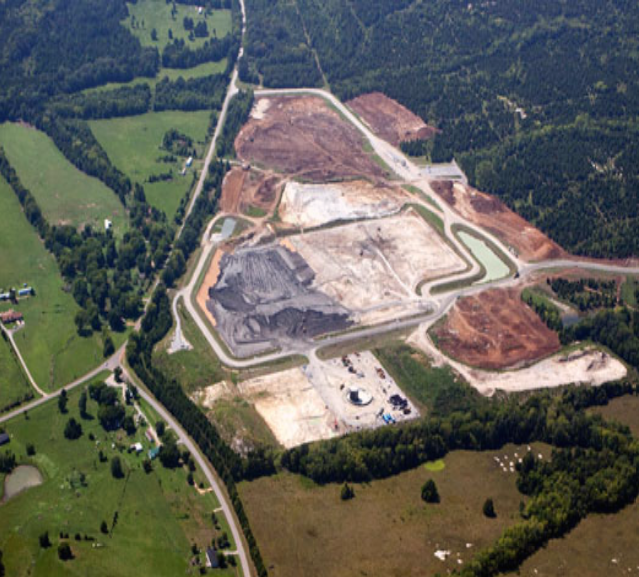
Mass Incarceration
Research has pointed out for decades that prisons are neither the most socially effective nor cost-effective means of dealing with criminality, so why has the upward trend of mass incarceration continued in the United States? Panagioti Tsolkas, activist and founder of The Campaign to Fight Toxic Prisons, put it very plainly: “This country has used prisons to maintain social inequality for decades.” Or, as Razack writes, “Populations that stand in the way of the progress of capital accumulation are targeted for disposability, and relegated to the realm of ‘sub-humanity.’”
Prisons are, at their core, warehouses that have been built to contain and remove the “waste” in the eyes of white affluent society: the populations that those in power have systematically deemed disposable, threatening to their way of life or too troublesome to engage with constructively. Rachel Boccio has spent over 20 years teaching at John R. Manson Youth Institution (MYI) in Cheshire, Connecticut, a maximum-security prison for teen boys who were tried and sentenced as adults by the state’s criminal justice system. In her words, “Prison, more than any other carceral system, warehouses–in dramatic and draconian terms–the outcomes of pervasive social inequalities (homelessness, statelessness, illiteracy, poverty, addiction, marginalization, joblessness, criminality) that the state has caused and refuses to address.”
As many people are awakening to America’s racist history amid the rise of the Black Lives Matter movement, it should come as no surprise that communities of color are the ones being targeted by this prison system. Razack’s research has shown that every aspect of the carceral justice system demonstrates “a professionally and institutionally sustained belief in the lesser value of racialized populations,” upheld by police and prison guards, doctors and psychologists, coroners, lawyers, judges, and legislators.
The causes of racial disparities are systemic and widespread. Without dissecting every aspect of the inequity, the point can still be illustrated by simply focusing on the people who are ultimately imprisoned. African Americans are incarcerated at five to ten times the rate of Caucasians, and Hispanics are incarcerated at 3 times the rate of Caucasians (even discounting the horrific statistics of refugee and immigrant incarceration at the border detention camps). One in three Black boys end up in prison, and one in six Latinos, compared to the one in seventeen white boys. Black women, while not arrested at the same rate as Black men, are twice as likely to be imprisoned as white women. Native men are incarcerated at four times the rate of white men, while Native women are incarcerated at six times the rate of white women.
The US cannot even support the claim that “people who commit crimes go to jail,” because many of these prisoners are confirmed innocent (an estimated 12%), teenagers, charged with victimless crimes (34%), simply unable to post bail, or, as in the case of sixteen-year-old William Haymon, are incarcerated without bail, which can extend more or less indefinitely. As of today, Haymon has been incarcerated in an adult jail for 528 days despite never being formally charged with a crime. One statistic makes it abundantly clear: by 2016, Black people made up 47% of the list of individuals wrongfully convicted and later exonerated.
Targeting communities of color through incarceration has obvious economic and social consequences, and the human rights violations that result from incarcerating any large group of people have been well documented. In particular, every major climate disaster, including COVID-19, only clarifies the fact that the environmental racism faced by communities of color is profoundly exacerbated by racialized incarceration.
COVID-19 and the ‘genocidal climate crisis’
A wealth of research has shown that prisoners, and therefore communities of color, are especially vulnerable to climate change. A prison abolitionist and organizer, Jay Ware, has told the New Republic that incarcerated people may be considered on the “front lines” of a “genocidal climate crisis.” Another organizer in the aftermath of Hurricane Harvey noted the devastating impact the storm had on Texas prisoners, who have faced a host of environmental issues in recent years. “It’s not just being in the path of storms or disasters themselves–it’s the lack of ability to obtain clean water, air, and food, and lack of ability to leave dangerous situations and get to safety.”

Prisoners are often left in and then left responsible for disaster zones, but in the case of a highly contagious pandemic, insulated and overcrowded prisons are disaster zones. Even without considering the coronavirus, 15% of jail inmates and 22% of prisoners – compared to 5% of the general population – have tuberculosis, Hepatitis B and C, or HIV. By May of this year, 70% of the inmates in a California prison tested positive for COVID-19. By June, one-third of federal prisoners tested positive for the disease.
Putting prisoners at higher risk of contracting diseases is nothing new. In fact, the literal and metaphorical senses of “waste management” have long been geographically bonded in the United States. Cartographer Paige Williams partnered with the Prison Ecology Project for her Master’s project at Humboldt State University, which shows that American prisons are very often built near Superfund sites and other areas of environmental degradation and social disinvestment.
Paul Wright, executive director of the Human Rights Defense Center, which oversees the Prison Ecology Project, pointed out that this link is far from coincidental: “One of the patterns that we see is where corporations have come in, they pillage the environment, be it mining, forestry or whatever, and then when everything has been exhausted, when trees have been cut down, every last grain of ore has been ripped from the soil, and everything has been contaminated and poisoned in the process, the final solution is, okay now we’re going to build a prison here.”
Building prisons in the crosshairs of environmental and health disaster zones seems to be, unfortunately, a strategic decision; why not place the material waste deemed toxic and dangerous to society in the same location as the people deemed toxic and dangerous to society? Brett Story, a documentary filmmaker and associate professor at Ryerson University, and Seth Prins, professor of epidemiology and sociomedical sciences at Columbia University, wrote a thought-provoking article about this link in the American Journal of Public Health, entitled “Connecting the Dots Between Mass Incarceration, Health Inequity, and Climate Change.”
Ecological and economic disaster
“Mass incarceration is fully intertwined with the systemic disinvestment endemic to capitalism,” they argue. “On the one hand,” they write, “there are poor urban neighborhoods, often populated primarily by residents of color, with few jobs and crumbling transit, housing, and other infrastructure. On the other hand, there are poor, ecologically, and economically devastated rural landscapes first exploited and then abandoned by industry. Police flood poor urban neighborhoods with arrest quotas and quality-of-life ordinances, while prison boosters descend on poor rural towns promising jobs and prosperity via new correctional facilities on former farmland or industrial properties. At each end of the prison-industrial complex, fragile communities and delicate ecologies bear the brunt of an expanded carceral infrastructure, rather than investment, regeneration, and cultivation.”
There are egregious examples all across the United States, as Story illustrates in her documentary and recent book. In March of 2018, despite resistance from local businesses and ecologists, President Trump allocated a whopping $510 million to build a new federal prison in Kentucky on an old coal mine, even though individuals in other prisons near coal waste sites, such as Fayette, Pennsylvania, are widely known to have faced severe health issues.
Local resistance to building new prisons can be expected because, although they cause the greatest and most direct harm to the people they are built to incarcerate, prisons also cause severe economic and ecological damage to the nearby communities. Like landfills and radioactive sites, prisons have lasting negative impacts on both the local ecosystem and the local communities. In addition to the immediate and long-term ecological and economic impacts, prisons perpetuate a system of modern-day slavery that suppresses the invaluable insights and reforms that many incarcerated peoples could be contributing to society.
Placing prisons near Superfund sites is the prime example of how mass incarceration and environmental degradation form feedback loop, where disinvested communities and their land are the perpetual victims. As the climate crisis worsens, mass incarceration will only worsen existing racial and class injustices, while the mechanisms of the prison-industrial complex themselves harm both the social and ecological environments we live in. As such, mass incarceration is an environmental issue as well as a human rights issue, as the climate crisis is equally a racial and social justice crisis.
Primarily Black, Brown, Native, and poor incarcerated people, disadvantaged by America’s legal system, are being unwillingly used as our society’s fully disposable workforce. They are caged and placed in conditions where they will be the first to face disaster, whether rising temperatures, extreme weather disasters, food, and water toxicity and insecurity or the spread of diseases like COVID-19. We have yet to see if as their death count rises, the rest of society might admit to the abhorrent injustice of mass incarceration and also see that the danger we all face is real.

Americans may be starting to have that realization. The construction of the massive federal prison in Kentucky was successfully halted after years of work by activists and organizers. California plans to release up to 8,000 prisoners who would otherwise be at high risk of contracting COVID-19 while incarcerated. Wallace Pack Unit, a Texas prison for primarily elderly and disabled prisoners, who are particularly vulnerable to heatstroke, faced a class-action lawsuit for longstanding inhumane conditions, and in 2018, the judge finally settled the case by mandating that the state must provide air conditioning units. In the end, the judge concluded that the cost of the air conditioning would only be around $110,000, in contrast to the over half a million dollars the state paid to the prison’s correctional officers for heat-related worker’s compensation. During the case, a Texas State Senator and chairman of the Criminal Justice Committee stated the overt cruelty in the way people in power tend to view incarcerated populations: “We couldn’t afford to [add air conditioning] if we wanted to, but number one we just don’t want to.”
Basic human dignity
The Wallace Pack Unit case highlights the first priority for tackling the issue of toxic prisons. As stated by Kenneth Hartman, change begins first of all with “our society acknowledging that prisoners are fellow human beings who deserve to be treated with respect and compassion-based solely on our humanity.” Hartman was an inmate at a Lancaster prison who contracted the deadly Valley Fever due to prison mismanagement, and his words still ring true regarding America’s response to COVID-19: “Prisons found to be a serious health risk need to be closed. The changes made [so far] are about managing risk and trying to avoid lawsuits, not about fixing the problems of a massively dysfunctional prison system.”
Hartman also clearly acknowledges why those changes are difficult to enact: “The problem is, the intersection of environmental justice and mass incarceration runs right into the teeth of prisoners not being considered worthy of justice. If we complain about dirty water, or poor ventilation systems, or inadequate medical care, there is a collective societal shrug: You should have thought about that before you committed crime.” In a similar vein, as Tsolkas has written, “I think [it’s] the same reason why so many prisoners are not given the right to vote and held without any hope of parole. Because they’re viewed as a subclass of the population, deserving of less basic rights, help, and protection.”
Basic human dignity has been the demand of the Black Lives Matter movement for years, human rights advocates for decades, and abolitionists for centuries: we must cease to consider any human life as a “waste” of resources, especially if all that society requires to do so is labeling them as a “criminal.” We must all view prisoners as people deserving the same basic human rights and environmental justice as all of us. We cannot move forward without embracing the concept of racial indispensability and accepting that everyone’s future, in the face of the global climate crisis and continued racial and social oppression, is interconnected.
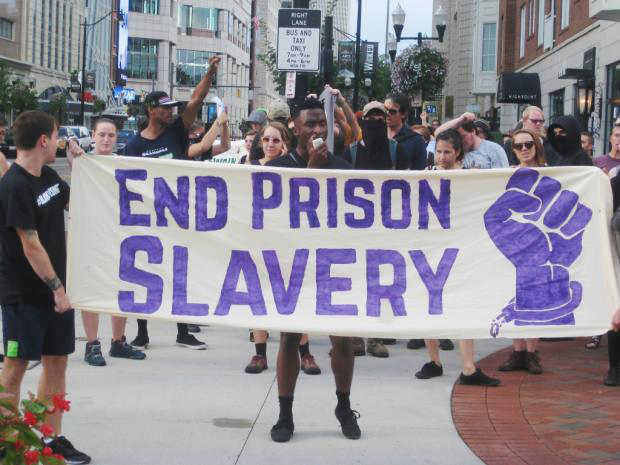
Prison Abolition
Although the United States’ response to COVID-19 may have been particularly lackluster, the global community, in general, recognized this interconnectivity as inherent to the fight against the coronavirus. In response to the pandemic, governments around the world enacted massively disruptive public health policy in a mere matter of weeks. They decided to value human lives above profits and changed the routines of society to help protect those at risk. As such, they confirmed that we are capable of enacting the social, political, and economic upheaval necessary to avert climate collapse and begin to live in a world with climate justice.
We have already proven that long-ingrained systems can be overturned, rapidly and globally. Now, while the prior status quo is fragile and the future is uncertain, is a moment of unprecedented opportunity, where we can imagine, shape and fight for the future we actually want. This especially means putting our efforts towards protecting and valuing the lives that have been exploited, controlled, degraded, and forgotten by our justice system and our society, both in and out of prisons.
Now is also a prime moment to fight for carceral justice because it goes hand in hand with many proposed elements of the Green New Deal, including affordable housing, public health reforms and increased job and income securities. As Story and Prins have written, “in order to expand the climate justice and decarceration movements and build the coalitional power required to avoid both carceral and ecological catastrophe, we need to integrate these fights, and tell a clearer story about shared values, goals, and strategies. We need to get explicit about how the exploitation and racism underpinning climate change are also those that animate mass criminalization and mass incarceration.” Their calls for an integrated response to these issues echo the proposals of the Red Deal, which “call for divestment away from the criminalizing, caging, and harming of human beings AND divestment away from the exploitative and extractive violence of fossil fuels,” which the Red Deal’s founders believe will require mobilizing grassroots rebellions to build collective power and achieve policy changes at all levels of government.
Which policy changes might these be? In recognizing that mass incarceration, health inequality and the climate emergency are all intertwined, the need to prioritize decarceration and prison abolition becomes clear. Ending mass incarceration alone would drastically reduce the systematic inequality and exploitation of America’s carceral punishment system, and reducing the size of the incarcerated population is the most important priority at the moment for tackling the intersection of carceral and environmental racism. However, activists and scholars have pointed out that attempting to reform the policies and systems that result in these injustices often just allows the underlying power structures to mask themselves and take on a new form. That is why prison abolition is the only lasting viable solution, as advocated for in the Red Deal. Decarceration is a necessary form of progress toward abolition that simultaneously advances justice on multiple fronts, including climate justice, racial inequality, human rights, and justice for mentally ill, queer, and poor rural communities.

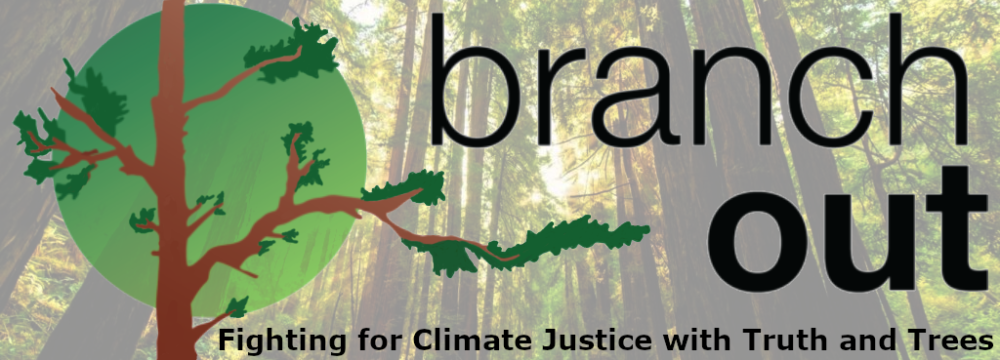

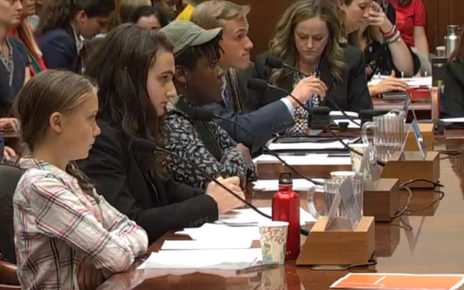

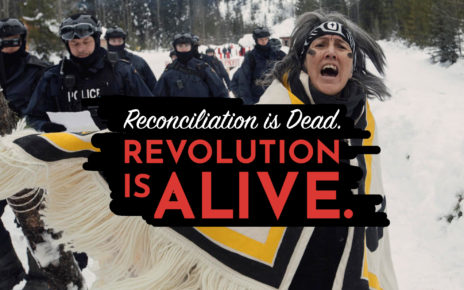
It’s really a great and helpful piece of info. I’m happy that you simply shared this helpful information with us. Please stay us informed like this. Thanks for sharing.|